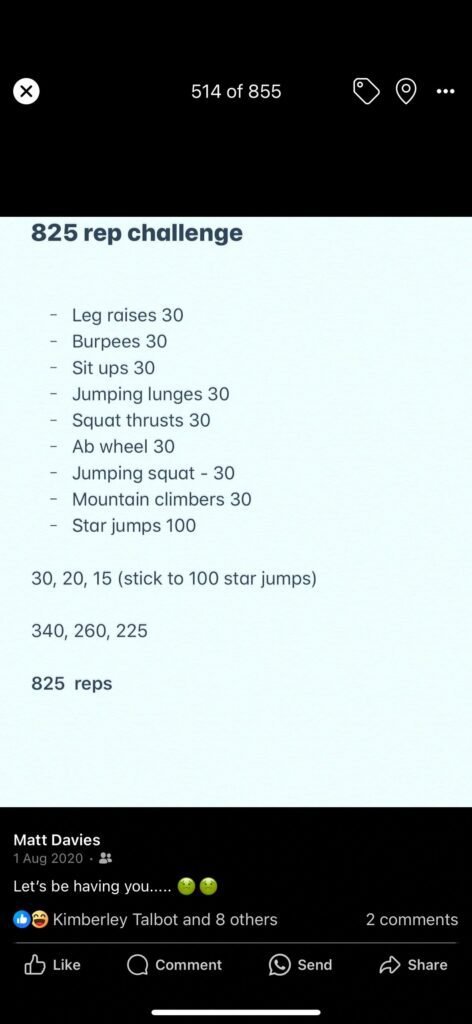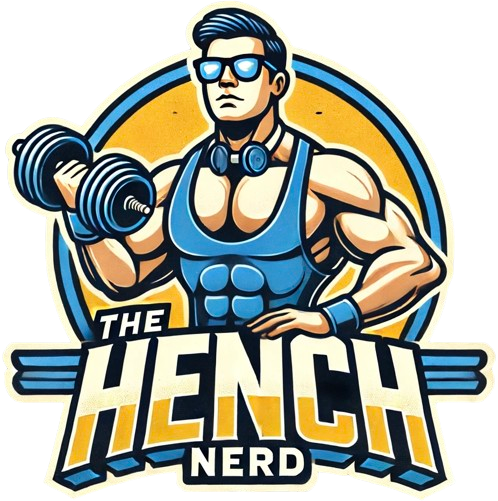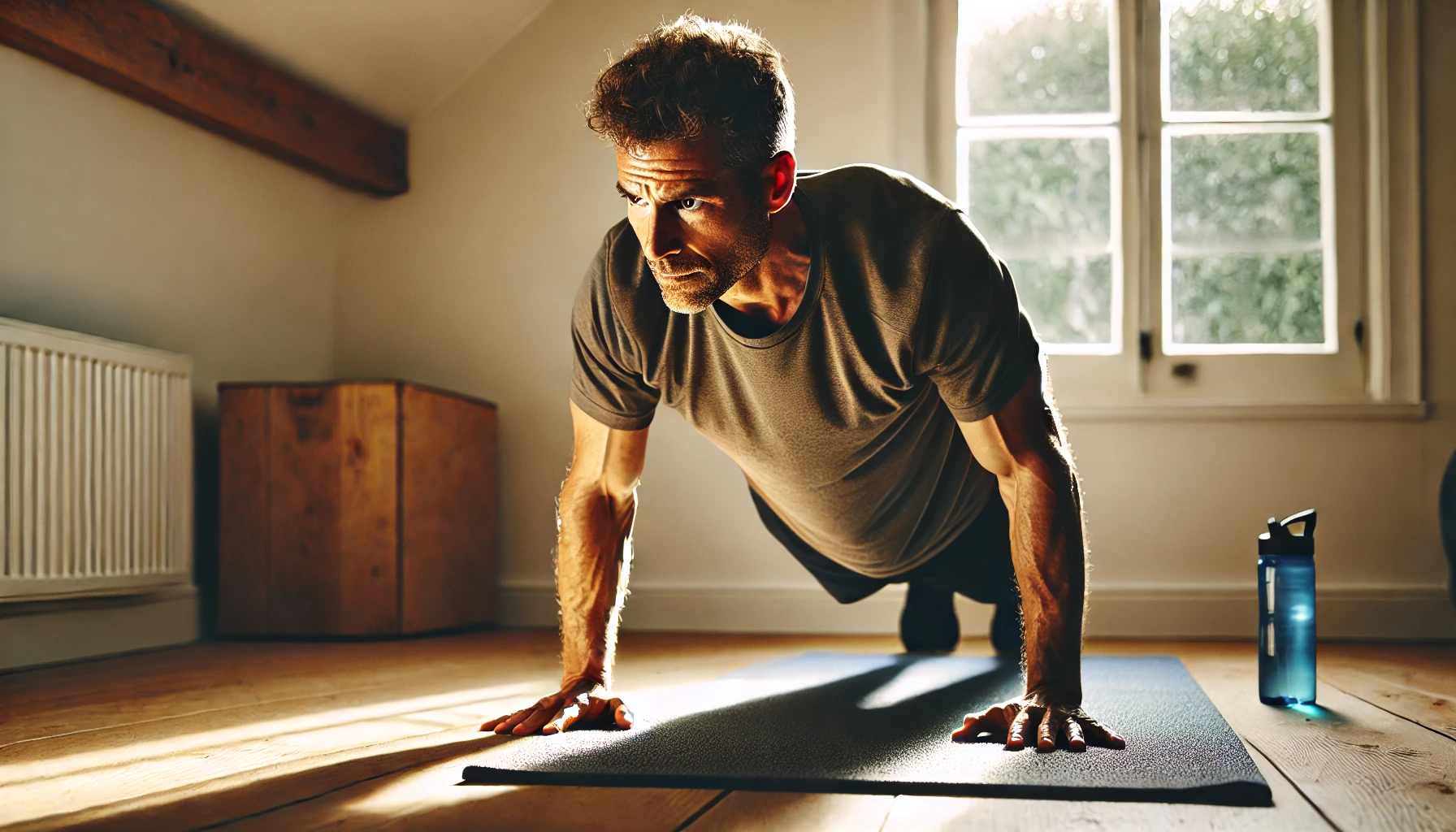It’s entirely possible to get ripped at home. You’ll need nothing more than your body and a little space. HIIT no-equipment home cardio workouts can be as gentle or as intense as you’d like them to be. I manage to maintain excellent fitness with no equipment needed for an effective home workout.
This article is for you if:
- You want to start adding some formal exercise in addition to your daily steps (as the title suggests, this workout program is suitable for all levels and ages).
- You don’t have the time or desire to join a gym.
- You have minimal time to invest in your fitness.
- You travel frequently and are looking for a genuine HIIT no-equipment home cardio workout that you can also complete in a hotel.
- You wish to complement your gym days with some hybrid exercise, such as home cardio workouts.
HIIT training has completely enabled me to fit in some brutal and efficient workouts into my schedule. I’d recommend you check out my how I fit exercise into my schedule article, if you haven’t done so already.
FAQs: Getting Ripped at Home with HIIT No-Equipment Cardio Workouts
1. Can I really get ripped at home without equipment?
Yes, absolutely. With nothing more than your body and a small amount of space, you can achieve fantastic results. HIIT (High-Intensity Interval Training) workouts are incredibly effective at burning calories, building cardiovascular fitness, and even maintaining muscle tone—all without the need for any equipment.
2. What is HIIT, and why is it effective?
HIIT involves short bursts of intense activity followed by brief rest periods. This method raises your heart rate quickly, improves aerobic capacity, and burns calories efficiently. A study in the Journal of Physiology found that HIIT burns 25-30% more calories compared to other forms of exercise in less time.
3. Who is this home workout suitable for?
This workout is ideal for:
- Beginners starting their fitness journey.
- Busy individuals without time for a gym.
- Frequent travellers looking for a portable routine.
- Those seeking an efficient complement to gym days.
4. How quickly can I see results with HIIT?
Research shows that HIIT can improve aerobic capacity by 10-15% within a few weeks. Additionally, its high calorie burn and afterburn effect (excess post-exercise oxygen consumption) contribute to fat loss and improved fitness levels.
5. Can HIIT workouts improve mental health?
Yes! Exercise, especially intense routines like HIIT, releases endorphins, reducing stress and boosting mood. During the COVID-19 lockdown, HIIT workouts helped many, including me, manage both physical and mental health when gyms were inaccessible.
6. What are the benefits of HIIT no-equipment workouts?
- Convenience: No equipment or gym membership required.
- Time-Efficient: Short but intense workouts deliver results quickly.
- Portability: Perform these workouts anywhere, from your living room to a hotel room.
- Adaptability: Exercises can be scaled to match your fitness level.
7. What should I expect when starting HIIT?
Initially, you may find it challenging, especially if you’re new to high-intensity workouts. It’s normal to feel sore as your body adapts. Over time, you’ll build endurance, strength, and confidence.
8. How often should I do HIIT workouts?
Start with 2-3 sessions per week, ensuring at least one rest day between workouts. As your fitness improves, you can increase the frequency to up to 4-5 sessions weekly.
19. What’s the key to sticking with a home workout routine?
- Set clear, achievable goals.
- Track your progress.
- Stay consistent, even when workouts feel tough.
- Focus on recovery and nutrition to maximise results.
I hope this article brings a little nostalgia in addition to adding value.
COVID-19 changed Everything
There are a few pivotal moments in life when we clearly remember where we were. If I asked where you were during the 9/11 terror attacks, you’d probably recall it vividly. I was stacking bananas for a major retailer at the time!
Another key moment many will remember: “Where were you during the lockdown announcement?” I was at the gym on 23.03.2020. Boris Johnson’s televised conference had just started. I asked the instructor if I could finish my last set of dips. Then I left, dazed and confused. My plans no longer included the gym.
This moment forced many, myself included, to reconsider how we could stay fit at home. HIIT no-equipment home cardio workouts became an essential part of my routine, proving that getting ripped at home is not only possible but highly effective.

Lost Without A Gym
There I was, aged 38, and I’d never taken more than a two-week all-inclusive holiday away from the gym. The meme above perfectly summarises my face as I drove past, gazing longingly. It was a toss-up between using that, or a photo of 1970s Bruce Banner (or David, in the TV series) walking to the lonely man theme. Stallone’s pain felt closer to my own.
The national applause for health and key workers was very moving. But the other side of humanity appeared: the opportunity to make a quick buck during a shortage.
I could live with the price hikes on hand sanitiser and toilet roll. But dumbbells? Usually around £20 and now worth more than an Apple product. How on earth was I going to stay fit at home?
My COVID weight gain
The simple answer to the question of staying fit during lockdown was a resounding, “I wasn’t.” Well, not for around six weeks. My gym habit had been swiftly replaced by a newfound love of beer, junk food, and, more worryingly, I was a proud participant in ‘Neck and Nominate.’ Remember that? If you don’t, you’d be forgiven for eliminating this short-lived fad from your memory.

I’ve always maintained (for 10 years at least) around half a stone (3-4 kg) and a few percent body fat fluctuations throughout the year. I weighed myself around once a month pre-COVID, as I was fairly consistent in my habits. After stepping on the scales at the end of April 2020, I’d put on a good stone and a half, and let’s just note that my body fat percentage started with a 2.
Far Beyond My Fighting Weight
A good fighting weight for me at 5 foot 10 (177.8 cm) is around 80 kilos (176 lbs) at around 13% body fat. Sometimes a little lower during the summer or higher in the winter, but that’s my yearly average. I’d never become so out of shape so quickly before. Then again, I hadn’t really been in the habit of ‘necking’ pints of lager for social media entertainment… It was a funny old time.
I could tidy up my diet (which is the main component of fat loss). Exercise has always been a huge motivator for me, driving great body composition changes. It would be many months before I could get back to a gym, and gym workouts were all I’d known for a very long time up until that point.
My journey into HIIT no-equipment home cardio workouts
Home cardio workouts without equipment were never part of my life (I’m a product of the pants and vest primary school P.E. era, so perhaps some emotional scarring deterred me from anything home cardio related).
The last time I’d really worked out at home was when I was 14, armed with barbells and dumbbells in my garage. Now, I was a 38-year-old man with a fully occupied three-bedroom house and no space to work out.
The conservatory was now my home office and was the perfect venue to host my home HIIT workouts. HIIT (high-intensity interval training) was usually my time-efficient go-to in the gym following a strength workout.
I knew this to be an efficient method of rapidly increasing fitness in minimal time (the trade-off being increased intensity). The heart rate shoots up, gets to a semi-recovered state, and off you go again. There was no reason why this HIIT no-equipment home workout wouldn’t work with the two necessities I could bring to the table—my body and a little space to use it.
I’d already taken action to reduce my calories and increase steps in line with my 10-week fat loss plan. I was now adding in three official home HIIT workouts per week and severely limiting my Neck and Nominate participation.
Research shows that high-intensity interval training (HIIT) can improve aerobic capacity by 10% to 15% after just a few weeks of training. A study published in the Journal of Physiology found that people doing HIIT burned 25-30% more calories compared to other forms of exercise, despite shorter workout times
My get ripped at home workout
I’ve viewed some random home workout articles online, and after sampling multiple weird exercises, I thought I’d stick with the basics. I started with the following workout, resting 30 seconds between exercises (you’ll find exercise demo uploads later on):
- Burpees – 30
- High knees – 50
- Jumping lunges – 30
- Squat thrusts – 50
- Mountain climbers – 50
- Jumping squats – 20
- Star jumps – 100
- Side-to-side – 100
I’d neglected my fitness for six weeks or so and not only suffered the physical decline, but my mental health started to suffer. Luckily I still had a strong base to work upon and started the workout with all the vigorous enthusiasm my false sense of confidence could muster. I intended to repeat the above workout three times. I barely lasted one rotation and was a pool of sweat on the floor, very close to throwing in the towel, walking to the fridge, setting up my camera, and starting another Neck and Nominate upload instead.
The following morning I woke up and ached in places I hadn’t in years.
I stuck with it for three months, evolved the workout, and got to the level below.

According to the American College of Sports Medicine (ACSM), HIIT has been shown to improve both cardiovascular health and muscular endurance significantly in as little as two weeks. This supports the notion that HIIT home workouts are efficient in driving body composition changes and fitness improvements.
My Home Cardio Results
I had not only reached this level of fitness and cut my body fat to lean levels, but I was fitter than ever. This brutal HIIT no-equipment home cardio workout lowered my resting heart rate to 39 BPM, down from 48. I also ran a 10K in record time, with no running prep. The point is, you can achieve superior cardiovascular fitness with just your body and space. Though I did add an ab wheel along the way.
I’ve also pasted another photo pulled directly from social media, two weeks later, showing my weight loss progress over much of that period. Not the most aesthetically pleasing photos, but I felt they were necessary to prove my point. Thankfully, they’re both date-stamped too—thanks, Facebook.
“HIIT is an incredibly effective method to improve cardiovascular health in minimal time. Studies show it can increase VO2 max and reduce resting heart rates more efficiently than traditional cardio.” — Dr. Martin Gibala, Professor of Kinesiology at McMaster University.

Whilst this post focuses on HIIT no-equipment home cardio workouts, it’s worth noting that you can also achieve excellent strength training and muscle-building results with minimal equipment. I’ll soon be writing an article on home strength training.
Adding Some Strength to The Mix
In April 2020, I managed to secure a pull-up bar and one large 20kg weight plate (I was rather inventive with this plate). This was all I needed for a powerful full-body home workout. In addition to the three times a week HIIT workouts, I also added two upper-body strength workouts. My strength workouts were as follows:
- Pull-ups to failure – 3 sets
- Press-ups (with the weight plate plus my then 7-year-old son on my back) to failure – 3 sets
- Inverted shoulder presses (feet up on a wall, pressing down and up using shoulders) – 3 sets
The strength workout lasted around 20 minutes, and all major upper body muscles were worked harder than the last time to ensure progression. The HIIT workouts lasted around 25 minutes. When the gyms reopened, I was pleasantly surprised that I’d maintained most of my muscle mass and increased my cardiovascular fitness. Upon returning to the gym and strength training, I found I’d lost considerably less strength than I had pessimistically anticipated.

The Long-Term Benefits of HIIT No-Equipment Workouts
When it comes to HIIT no-equipment home cardio workouts, the long-term benefits go beyond just fat loss and getting ripped. Scientific studies have shown that HIIT workouts can significantly improve cardiovascular health, metabolic efficiency, and even mental well-being.
A study published in the Journal of Sports Medicine and Physical Fitness found that participants who engaged in HIIT no-equipment workouts for 12 weeks showed a marked increase in VO2 max (a key indicator of cardiovascular fitness) and a reduction in blood pressure. Additionally, research from the American Heart Association highlights that HIIT workouts improve insulin sensitivity, making them ideal for those looking to enhance metabolic function and reduce the risk of Type 2 diabetes.
Beyond the physical benefits, there’s growing evidence to suggest that home cardio workouts also positively impact mental health.
A 2021 study from the British Journal of Sports Medicine revealed that people who regularly engaged in high-intensity workouts experienced a reduction in anxiety levels and better mood regulation. This makes HIIT no-equipment home cardio workouts a powerful tool not only for physical transformation but for maintaining long-term mental well-being as well.
The science behind HIIT is clear: by engaging in regular, high-intensity intervals, you can boost your overall health in a time-efficient and sustainable way, without ever needing to step foot in a gym.
You can Get In Exceptional Shape With HIIT No equipment home cardio Workouts
You can absolutely achieve an excellent level of muscular gains and cardiovascular fitness using nothing but HIIT home cardio workouts.
I travel a considerable amount for my day job, and the above no equipment home cardio workouts are still a staple of mine in hotel rooms. I also use them when working from home and need a quick and efficient lunchtime blast.
Starting HIIT Home Cardio Workouts
The answer to how you should start depends very much on your age, fitness level, and whether your body can currently handle any high-impact activity. I’d always recommend caution, as nothing stalls progress quicker than an injury.
If you have a significant amount of fat to lose, I’d recommend starting as follows:
Extreme beginner / significant amount of fat to lose
- Star jumps are one of the safer exercises to start with.
- Find out your tolerance for star jump repetitions (how many can you do before you absolutely need to rest—whether it’s 5 or 50, what matters is your intensity).
- Start a 20-minute timer (phone or fitness wearable). Perform your tolerance number of star jumps. Rest for 30 seconds (that’s one set completed) and repeat. Make a note of your workout (what gets measured gets improved upon). You’ll want to note the following:
- How many sets you achieved within the 20-minute time frame.
- You now have a benchmark to beat every time you work out—increase the number of star jumps in a set or the number of sets next time.
- Three times a week is ample—work as hard as you can tolerate. Being able to generate and tolerate intensity is a skill you’ll develop over time.
Simplicity shouldn’t be mistaken for being an ineffective tool. Put simply, “You’re stressing your body to perform at a level it’s not used to. Continue to do that and work harder each time, and you’ll progress and get fitter.”
Back To Basics
This back-to-basics workout can scale in difficulty depending on your fitness level. I might need a 30-second break after 10 minutes of continuous star jumps, while you might need one after 20 star jumps. What matters is that you’re working as hard as you can each time. If you’re struggling with star jumps, stick to good old-fashioned running on the spot until you can progress.
You should now start to grasp that these HIIT no-equipment home cardio workouts can really be scaled for all levels and ages.
“When starting a workout routine, especially HIIT, it’s important to tailor exercises to individual fitness levels to prevent injury and maximise gains.” — Jordan Metzl, MD, sports medicine physician at the Hospital for Special Surgery.
Designing HIIT No equipment home cardio Workouts
Once you’ve mastered the basics, the possibilities are endless. I’m a creature of habit and consistency, so I mostly stick with the workout I pasted above. However, you may find more home cardio exercises you’d like to add to the mix. If they make you breathe heavily and are safe—go for it! The general exercises I stick to are as follows (with notes in brackets to indicate whether they are beginner or more intermediate movements from a joint care perspective):
- Star jumps (beginner, and I’d stick to this one if you have a significant amount of fat to lose)
Side to sides (beginner)
Mountain climbers (beginner)
No Push up Burpees (advanced)
Jumping lunges (advanced)
Squat thrusts (beginner)
Squat jump (can be both- test it yourself- full squats)
High knees (beginner)
As referenced above, if you get an appetite to incorporate more exercises, go for it! The above are my staples, but if you fancy variety, there are many good and effective bodyweight cardio workouts available for free on YouTube.
Intensity is key to making the most of short workouts. You can achieve the same or better results with a 20-minute high-intensity workout than a 60-minute steady-state session.” — Tom Holland, exercise physiologist and author of ‘The Micro-Workout Plan
To Simplify the Home Cardio Workouts
- You can either select the duration you’d like to work out for or time yourself completing a certain circuit (no need for over 25 minutes—it’s all about relevant intensity. For longer, lower-intensity cardio, stick to walking, etc.). If you only have 10 minutes to spare, as long as intensity is high, I promise you’ll see results. Remember—diet for fat loss, exercise for fitness!
- Pick some exercises above depending on your ability to handle them, and get to work! To start, I’d recommend sticking to the same workout for a few weeks or keeping a consistent workout for that specific day of the week (e.g. Workout A on Monday, Workout B on Wednesday, Workout C on Friday).
a beginner To no Equipment HIIT Home Cardio Workouts Example
Monday: Workout A (20 mins timed)
- Star jumps – 20
- Squat thrusts – 10
- High knees – 20
- Rest for 30 seconds, and that’s one complete set you’ve completed.
- Repeat.
- Measure your progress by asking, “How many sets did I manage to achieve in 20 minutes?”
If the above feels too difficult, you can reduce the repetitions of each exercise before your 30-second break. Likewise, you can increase the reps or duration (up to 25 minutes).
Wednesday: Workout B (Star Jump Workout)
- How long does it take to do 500 star jumps?
- As above, increase or reduce according to your current fitness levels (I still do this one with up to 2,000 star jumps, even to this day).
Friday: Workout C (Side-to-Side / Squat Thrust Workout – 15 minutes)
- 20 side-to-sides (both sides count as one repetition).
- 15 squat thrusts.
- Rest for 30 seconds for one complete set.
- Repeat.
- Measure your progress by seeing how many sets you can complete within 15 minutes.
Common Mistakes to Avoid in HIIT Home Cardio Workouts
While HIIT no-equipment home cardio workouts are incredibly effective, there are some common mistakes people make that can limit results or lead to injury. Avoiding these pitfalls will help ensure you’re getting the most out of your workout routine.
- Skipping the Warm-Up: Jumping straight into high-intensity exercises without a proper warm-up can increase your risk of injury. It’s crucial to spend 5-10 minutes on dynamic stretches or low-impact cardio (like jogging on the spot) to prepare your muscles and joints for the HIIT workout.
- Overtraining: HIIT workouts are intense by nature, and performing them too frequently can lead to overtraining, burnout, or even muscle strain. Aim for 3-4 sessions per week, allowing your body time to recover. A study from the Journal of Strength and Conditioning Research found that participants who allowed adequate recovery between HIIT sessions saw greater improvements in both strength and endurance compared to those who trained without rest days.
- Ignoring Form and Technique: Performing exercises like burpees, mountain climbers, or squat thrusts with poor form can negate the benefits of the workout and lead to injuries. Ensure you’re performing each exercise correctly to target the right muscles and maximise the benefits of your HIIT no-equipment workouts.
- Not Pushing Hard Enough: The effectiveness of HIIT lies in intensity. To truly reap the rewards of these home cardio workouts, it’s essential to push yourself during each interval. According to the American College of Sports Medicine, your heart rate should reach 80-90% of your maximum during the work phase of HIIT. If you’re not reaching that level of intensity, you might not be optimising your workout for fat loss or cardiovascular improvements.
Key Takeaways
- HIIT no-equipment home cardio workouts are highly effective for improving cardiovascular fitness and achieving lean muscle without the need for a gym.
- You can reach impressive fitness levels with just your body and space, proving that home cardio workouts are accessible to everyone, regardless of equipment.
- Regular HIIT workouts can significantly lower your resting heart rate and improve overall endurance, even without traditional cardio preparation like running.
- The versatility of no-equipment HIIT workouts allows you to tailor for all fitness levels, whether you’re a beginner or advanced.
- Consistency and intensity are key. Short, high-intensity sessions are more effective than long, low-intensity ones when it comes to fat loss and cardiovascular improvement.
Conclusion
It should be evident that you can create very demanding sessions of HIIT no-equipment home cardio workouts and scale them according to your fitness level and age. Please don’t think you must work out for long durations to become exceptionally fit, or that complex equipment is needed to get the job done.
You can take your cardio fitness to exceptional levels this way, and I’ve done it! You’ll get far better results by exercising vigorously for shorter durations than by thinking low-intensity workouts with the same effort each time will get you where you want to be.
It all boils down to a point I’ve emphasised before in my exercise basics article—you’re looking to trigger an adaptation! The best home workout is the one you consistently adhere to.
I’d love to hear from you if you found this useful and if you’ve achieved results using the tips within this article.
A subscription to my website would be hugely appreciated. I post 2-3 times a week, covering various topics such as fitness, muscle building, health, and general lifestyle articles. Providing value to you is my primary goal, and I hope I’ve achieved this.
Thank you very much for reading!
Chat soon,
Matt


13 thoughts on “How to Perform HIIT No equipment home cardio Workouts”
Comments are closed.